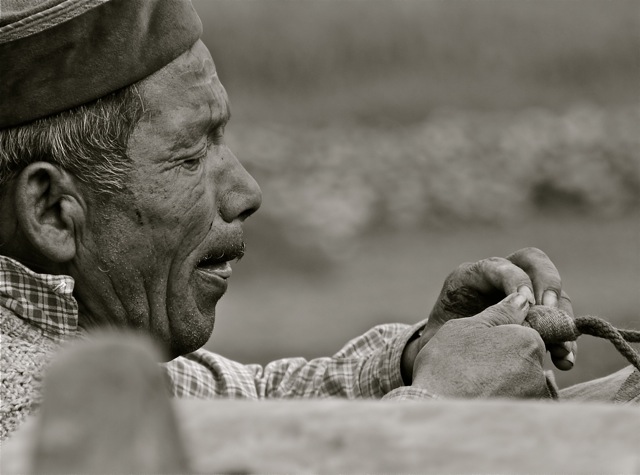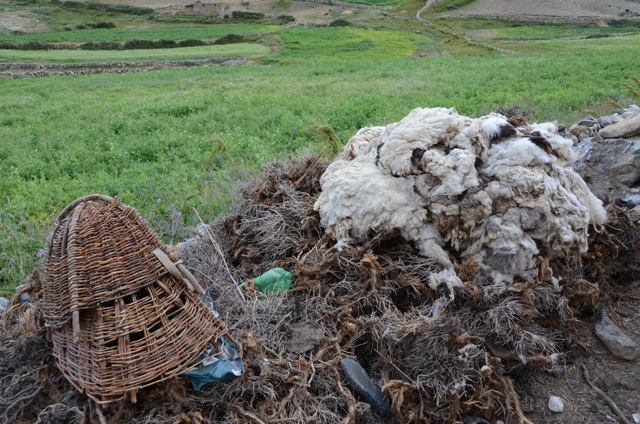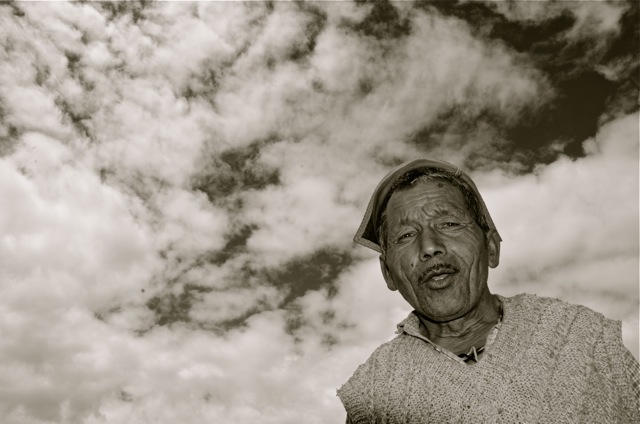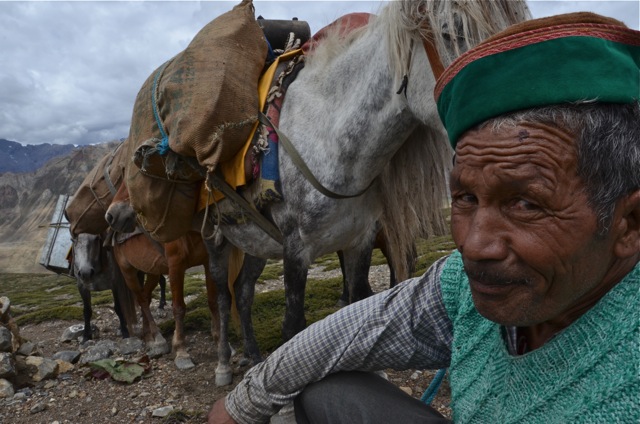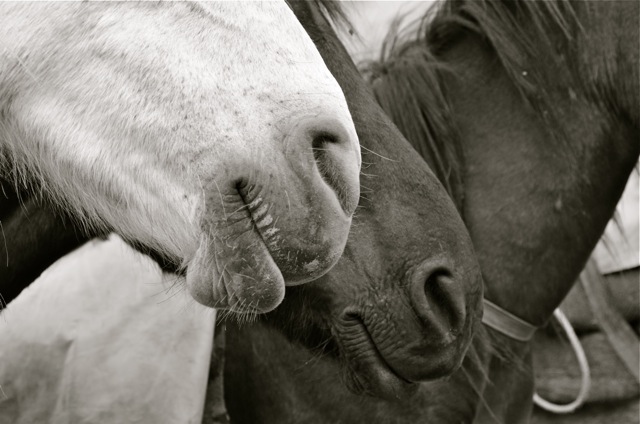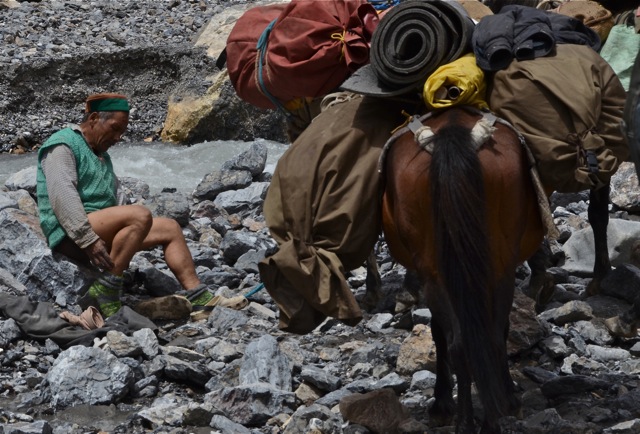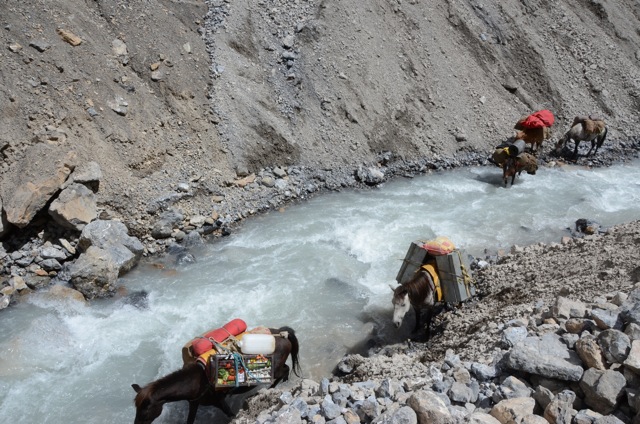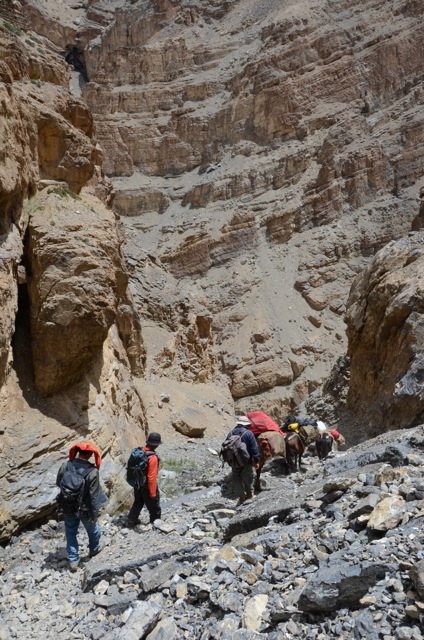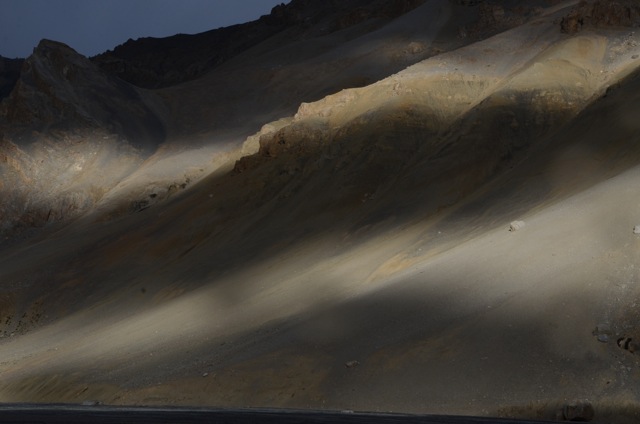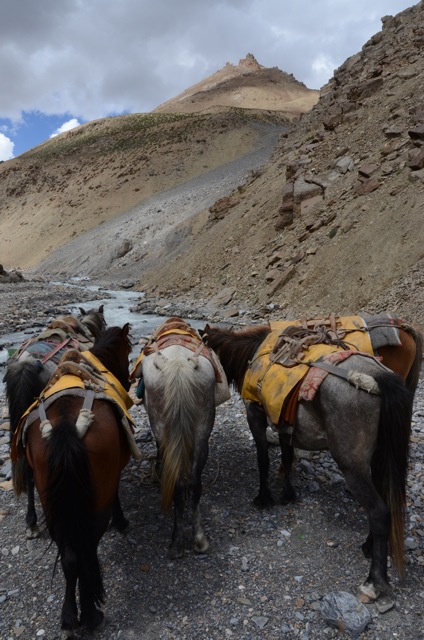Bandits and brigands who were ever creative would often strike not at or after the crossing of a pass but rather in the valleys leading to the great passes, where escape routes were numerous and sightlines blurred and blocked. Mountain Passes on the other hand were rarely used to stage such attacks. For so many reasons the passes are special: they are sacred, they are high, they are the dwelling places of deities, they host winds that rip and inspire, they are a small success on routes that were often beyond daunting.
Ladakh, who’s meaning is literally “Land of Passes” is a place where one has to travel over the mountains’ V-shaped passes. And for that we need a horseman…and we get one.
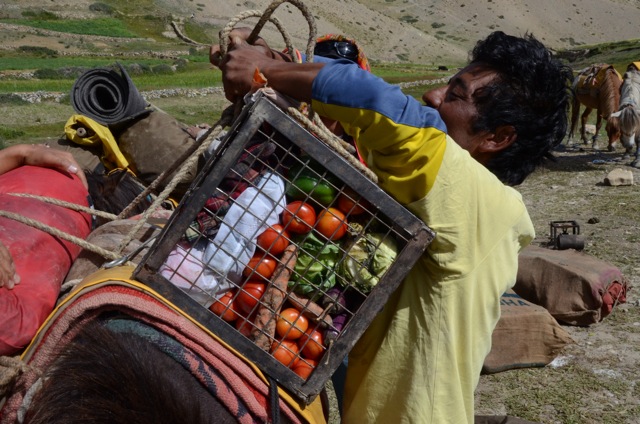
Sadanand had a way of convincing others to assist. Here we have our veggies loaded by a friend of Sadanand’s upon departure.
We now move as a team of six through one of these famed ‘valleys of thieves’ with Kaku, Karma, Tashi, Michael, myself and a hunched man of deep furrows and lines edging ever closer to the Parang La Pass. This man who is bent by years of mountains’ attentions wears a traditional Kullu wool cap and is, I think, perhaps a minor version of the ‘toughest man in the world’. At of 65 our horseman seems like someone who should be resting, but instead he wears a pair of white Croc sandals, woolen socks, pants, two pairs of long underwear, grunts an unending stream of unintelligible garble (no one fully understands his words) and uses the layering system I’m familiar with for his torso.
A hand-woven woolen vest of turquoise, a shirt, and under that two more long-sleeved shirts. He is a small package of indestructibility who has a slightly reckless look about him…apart from an immaculately kept thin moustache above his lip. In short, he is perfection. He wouldn’t be out of place in a dozen countries in the world, so powerful is his universality to me and it is these kinds of characters that add immeasurably to a journey.
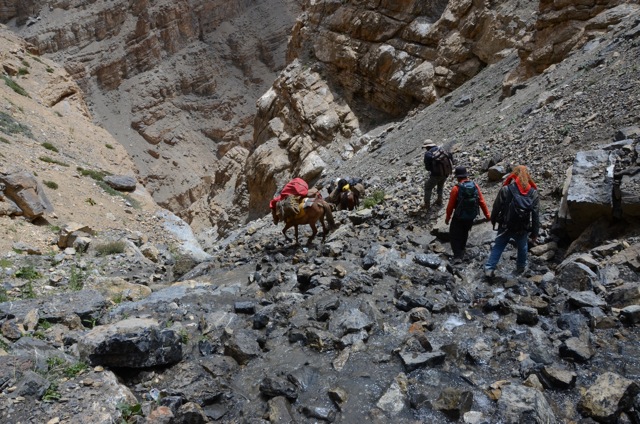
A descent that needed every second of attention as we plunged down…and further down. The mules, led by our man Sadanand were inspiring.
Our mules have grunted and farted their way down a tight series of switchbacks and now we’re in a gorge that roars with yet another glacial river. We’ve had to cross, re-cross, and cross again as the swollen waters have eaten their way up the valley walls and swallowed the pathways. There simply aren’t alternatives to making it through the waters other than getting wet.
So, with a particularly risky crossing in front of us, our horseman, Sadanand (we called him both Sadanand and Salman) sits down, strips off his pants and long-johns and gets down into his skivvies without a moment of consideration. His woolen socks and Crocs remain on and he commences his crossing. Earlier I had asked him about when he’d put his boots on and he responded in his grunting broken English “When we get to the snow”. The word “awesome” gets thrown around in my opinion where it often doesn’t belong…but this man of iron fully reserves the right to be termed “awesome”. He is a rare commodity.
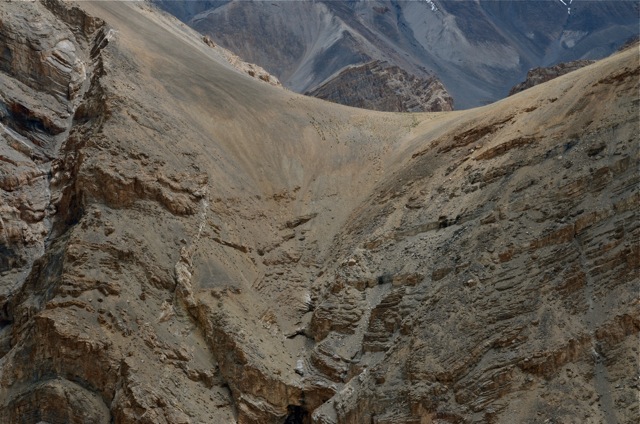
The senses must contend with paying attention to every metre of rock below the feet, and the stunning sights that assault from every angle
Leading his favored mule first, old Sadanand pushes through the ice-cold currents with no hesitation. His short legs are hairless, powerful and bowlegged, but this combination seems to have created wonderfully powerful little engine that propels him through anything. Michael in seconds is grimacing and screaming that his feet were numb while our horseman seems singularly immune. The water is at a temperature that makes me wonder how it isn’t frozen. It bludgeons the bones of the feet and at times seems as though it is going to pulverize the very nerve endings in the lower legs. Meanwhile Sadanand and his ancient legs simply burrow forward. Using a series of whistles, screams, and bellows he urges the mules to follow. They seemed to hesitate but eventually decide that the old grizzled warrior who led them was also the man who’d be most likely to feed them at the end of the day. Mind you, he isn’t adverse to slapping the mules right on the snout when needed with a few words of abuse added on for extra colour.
Our team has carefully moved, hopped, and edged through the valley and it is here, deep beneath the pass to the north of us that bandits struck regularly. While the fear of bandits has dissipated the risks of weather haven’t. Flash floods that streak and pummel their way down would annihilate us in seconds, landslides would snap and cut down a caravan with horrifying results, but the days of human intervention are no more. Bandits were as much a part of the trade routes as the mules themselves but now only the environment and the elements remain to flex their very significant muscles.
Sadanand and Tashi have an oddly wonderful relationship, which develops daily in tiny bursts. Tashi usually looks for options that are considered and practical when traveling, whereas in a seemingly bizarre reversal of “the older one gets the more logical one becomes’, Sadanand usually goes with the first or most direct option, which is often a risk-ridden choice. We’ve realized that he doesn’t like being told anything if it is said in the wrong tone. Tashi though is a master of soft-spoken logic and usually can convince Sadanand with soft coo’s and a minimum of fuss. I say usually because there are still times when our grizzled horseman isn’t to be convinced of other’s words and he simply marches off to the bemused appreciation of the rest of the team.
Horseman I’ve noticed over the years, are quixotic blends of toughness, insecurity, and wonderful abilities who don’t need much, but they absolutely do need respect and the odd pat on the back lest they feel taken for granted. They are however, one of the vital components still of travel through the mountains. The are the first up, the last to eat, usually lonely to a degree (unless they can sing all night), and do not like being questioned on “why” they’ve decided to go a particular route or travel at a particular speed.
Sadanand comes from an area known for traders and horseman called Kinnaur, yet another valley with its own history of routes. He has been working in the mountains, he tells us for 52 years, since he was a young boy. He’s also developed a way of communicating with his ‘minions’. Gruff and seemingly abusive to the mules, he actually is far more gentle than he’d like anyone to believe. He often talks to the various mules individually and there are times where I sense in them a kind of gentle tolerance to this man whose arms and abilities might not be quite what they once were. When he ties the loads the mules often look back at him with a kind of dismay as though asking him “is that as tight as you can manage”?
Sadanand has gotten into the habit of using Karma and Kaku to assist in the tying…and in everything else. One morning of note, we awake to find the mules gone. They’d left to find other grazing during the night. Sadanand’s line face smoldered briefly as he swore into the winds and pulled his over-sized pants on. His little hunched figure ploughing off into the winds stayed in the mind, while the rest of us inhaled more tea and spared a thought for him…and for the mules when Sadanand finds them.
We’ve doubled our daily travel distances in an effort to maximize time but for all of desires to push forward, the ultimate decision makers are the 6 four-legged mules. Our camps must have grazing for them and there are no forces around that can change this fact. Sadanand has an important role in our decision making as well. As much as we’d love to make entirely selfish decisions, the concept of a ‘team’ is sacrosanct. He and the mules are as vital to our journey as any.
Trade items, which included items far beyond simply wool, salt, and tea, passed through these very valleys. As one trader we had met clarified, “Anything that was needed was traded using the barter system. Luxury items were not important. What was important was what was needed”. He emphasized the success of the barter system and the need for honour amongst trading parties.
Barley, wheat, horses, and leather goods were sent north to the Chantang area which is a vast region spanning India’s northern Himalaya region and east into the grand expanses of the nomads in Tibet. Salt and wool would come south. Pashmina (known locally as lèna), and salt from the high mountain salt lakes were the main commodities coming off of the Tibetan Plateau.
There are often times during our trek days when I simply stare at the pathways that are still visible but rarely used, and wonder at what has come before us. Hooves moving with loads of goods, but also ideas, DNA, news, and trends passed to and fro.
Camp before the Parang Pass is made upon a small and very temporary island. I wonder at the wisdom of camping upon a swath of land that in milliseconds could be flooded in a wave of ice water from above. There is little choice though as unless we are prepared to add another four hours of trekking to the next acceptable camp for the mules.
That evening we’re treated to Sadanand’s off-tune hymns and a rather brutal case of gas that he’s acquired. We hope its nothing permanent, for a number of reasons as we all have a long ascent tomorrow and don’t wish to be downwind of an ailing and flatulent Sadanand.

